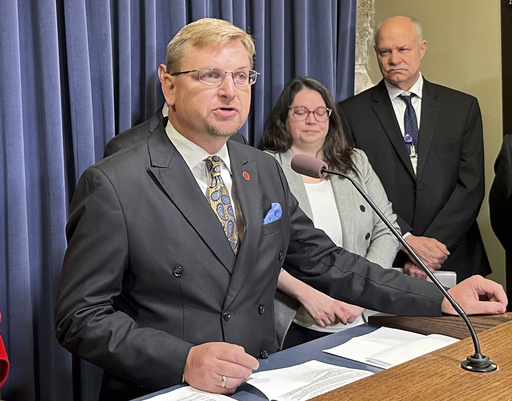
In the years leading up to the Civil War, audacious individuals risked their lives to assist approximately 7,000 enslaved people fleeing from the South through Illinois, embarking on lengthy journeys toward freedom. Recently, a task force comprising lawmakers and historians proposed the establishment of a dedicated commission to document, promote, and honor these clandestine journeys along the Underground Railroad.
The report from the task force advocates for a commission staffed by professionals to delve into the perilous history of these escapes, a process that often included seeking refuge in secret rooms built by abolitionists, disguising identities, and employing various strategies to elude relentless bounty hunters eager to recapture fugitives.
State Senator David Koehler of Peoria, who co-led the task force with Representative Debbie Meyers-Martin from the Chicago suburb of Matteson, emphasized the need to bring forth the untold narratives of Illinoisans who courageously opposed oppression.
Koehler expressed his hope that this effort would honor and acknowledge the courage and sacrifices made by those freedom fighters who operated in and crossed into Illinois, not long ago in the grand scope of history.
According to task force member Larry McClellan, a professor emeritus at Governors State University and author of a book on the subject, Illinois—home to President Abraham Lincoln—could have as many as 200 sites related to the Underground Railroad.
“There is an extraordinary array of sites scattered across Illinois, ranging from historic homes and designated trails to storage locations, all of which provided some form of assistance to those seeking freedom,” McClellan noted. He further explained that the commission’s power lies in its ability to connect these historically significant locations and weave together the broader narrative.
Between 1820 and the onset of the Civil War, upwards of 150,000 enslaved individuals fled across the Mason-Dixon Line, supported by daring “conductors,” McClellan pointed out. Estimates suggest that between 4,500 and 7,000 of them made their way through Illinois.
However, despite Illinois contributing numerous volunteers to the Civil War effort, it is not without its own complex history regarding slavery. During this time, southern Illinois displayed significant Confederate sympathies, as the southern stretch of the state extended deep into territories historically linked to slavery.
Interestingly, even Lincoln, who later crafted the Emancipation Proclamation, once represented a slave owner in a lawsuit regarding a slave’s freedom—in 1847, he defended Robert Matson, a slave owner, in Illinois.
This historical context added a layer of danger to the escape route through Illinois, according to McClellan. While southern Illinois conjures romantic images of fugitives braving nighttime runs, the landscape retained an air of hostility, particularly in regions closer to the old South. As one traveled further north, states like Illinois, while not necessarily inviting, had less perilous conditions for escapees.
If captured in northern Illinois, an escaped enslaved person faced not a return to their owner—a lengthy process—but rather being sent to St. Louis, where they risked being sold once again, as noted by John Ackerman, Tazewell County’s clerk. Ackerman has engaged in research about the Underground Railroad alongside his genealogy efforts and has urged the study of this significant historical phenomenon to Koehler.
Those white individuals caught helping runaways encountered severe fines and could be imprisoned for up to six months—a heavy burden for an Illinois farmer who was often a conductor, potentially leading to financial disaster for their families. The situation for Peter Logan illustrates this struggle; a former enslaved man who gained his freedom and became a conductor after moving to Tazewell County.
“This was a daring effort put forth by every one of these individuals,” Ackerman remarked. “They deserve more than just a fleeting acknowledgment in history.”
The task force recommended that the newly proposed commission operate under an established state agency, such as the Illinois Department of Natural Resources, and that it expand upon the efforts already in motion by numerous local organizations involved in projects extending from the Chicago to Detroit Freedom Trail, as well as ongoing initiatives within the Illinois suburbs of St. Louis.
